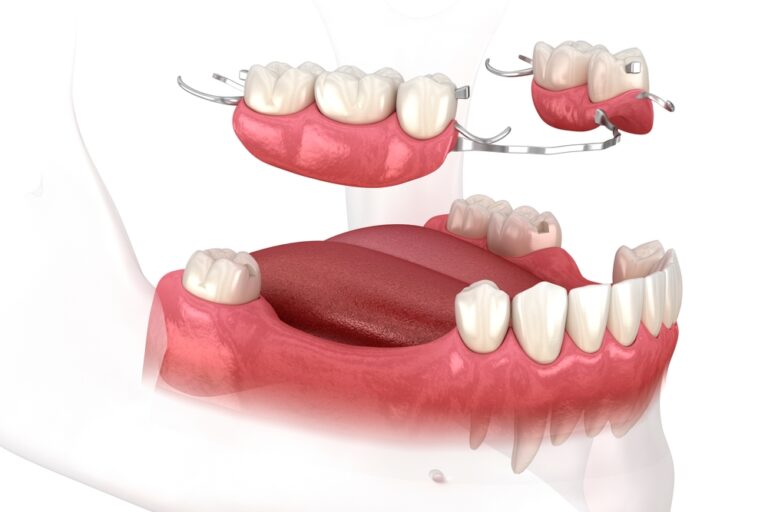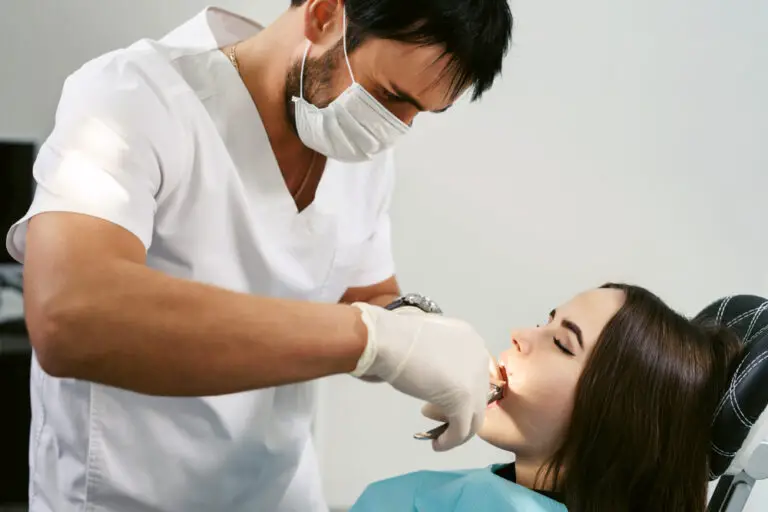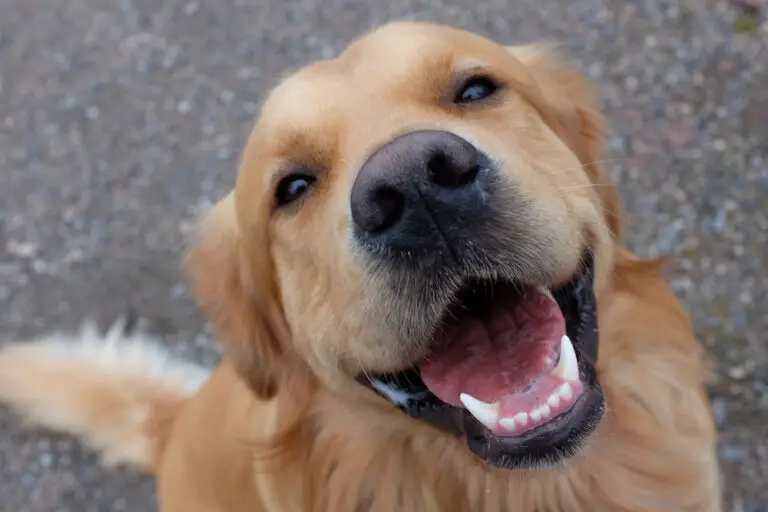Smiling is a universal human expression that uniquely exposes teeth to convey happiness, joy, trust, and other positive emotions. But why is tooth display intrinsic to smiling? This peculiar behavior likely has roots in our evolutionary past.
The origins of smiling in humans

Smiling serves an important social function in humans. But to understand why we bare teeth when we smile, it helps to look at the expression’s origins and purpose.
Facial expressions in animals
For many animal species, exposing teeth is used as a threat display to signal aggression and establish dominance. Baring teeth or fangs warns rival animals to back down or risk attack. Most primates, for example, pull back their lips and grunt to flash teeth and demonstrate their strength.
In the animal kingdom, teeth exposure does not indicate positive emotions like human smiling. Instead it conveys hostility and the potential for violence. Showing teeth generally represents a defensive or offensive threat display for non-human species.
Primate origins of the smile
Early humans evolved smiling as an appeasement gesture and social signal. According to anthropologists, the human smile likely derived from the “fear grin” or “scare face” expression observed in other primates.
Many apes retract their lips vertically to expose teeth and gums as a submissive gesture to more dominant group members. This placating display demonstrates harmless intent and de-escalates confrontations within social groups.
Over the course of human evolution, this primitive grimace gradually transformed into our warm, welcoming smile used to facilitate social bonding. The ancestral primate fear grin served as a precursor indicating friendly appeasement, which later acquired more nuanced, positive emotional meanings.
Development of smiling in infants
The development of smiling behavior in infants further supports the social function and origins of human smiles.
Newborns don’t have the muscle control and coordination to intentionally smile. But between ages 2-6 weeks infants spontaneously begin to produce reflex smiles, especially in their sleep. These earliest smiles arise from the subcortical regions of the brain that generate innate motor patterns.
True social smiles emerge around 6 weeks when infants become responsive to external stimuli like parents’ faces and voices. Babies now start smiling purposefully as a way to bond and interact with caregivers, lighting up when shown attention.
So human smiling behavior initially arises from intrinsic biological reflexes and later becomes integrated with social engagement in early development. This reflects how smiling evolved from an inborn gesture to acquire complex socio-emotional meaning through human evolution.
The importance of smiling in human society
Smiling plays a pivotal role in human communication and society due to the wealth of information it conveys about emotions and intentions. Some of the key functions and effects of smiling include:
Signaling positive intent
Unlike most species, humans use smiling to demonstrate positive, harmless intent rather than aggression. Smiles convey friendliness, affiliation, and lack of threat. This helps smoothly initiate social contact and bonding between people.
Communicating emotions
Smiles indicate internal emotional states like joy, happiness, amusement, satisfaction, and affection. More than any other species, human smiles can express an intricate spectrum of positive emotions and subtle moods. Our facial musculature supports an entire language of smiling.
Building connections
Exchanging smiles promotes rapport, trust, and cooperation between individuals. Smiles trigger the release of endorphins and dopamine, reinforcing social and romantic attachments. Even an exchange with strangers elicits temporary feelings of affiliation and connection.
Enhancing attractiveness
Studies show smiles boost perceptions of physical appeal. Smiling increases facial attractiveness across genders and cultures. This response likely reflects smile’s association with youth, health, and reproductive fitness.
Improving mood
The act of smiling activates neural pathways that can elevate moods. Smiling stimulates dopamine and serotonin release, decreases stress hormones, and upregulates frontal cortex activity associated with positive affect.
This evidence demonstrates how integral smiling is for forging social bonds, communicating inner emotions, and regulating mood and behavior in human relations. No other species relies on an expression like the smile to grease the wheels of social interaction.
The meaning of different types of smiles

Not all smiles are created equal. Human smiles actually convey a range of different emotional states and intentions through varying facial muscular engagement.
Duchenne vs non-Duchenne smiles
The Duchenne smile, named after French neurologist Duchenne de Boulogne, is the pure joyful smile that involves lifting of both the mouth’s corners through the zygomatic major muscles and crinkling of the eyes by the orbicularis oculi muscles. Only positive emotions like happiness or amusement provoke this complete, sincere smile.
Non-Duchenne smiles solely raise the mouth’s corners through the zygomaticus muscles, without eye region engagement. These smiles may reflect politeness, embarrassment, or deception rather than true pleasure.
Upper vs lower smiles
Upper smiles engage more upper facial musculature and expose upper teeth, reflecting true delight. Lower smiles that predominantly stretch the lower face and expose lower teeth are seen as more aggressive or sardonic.
Open vs closed mouth smiles
A smiling mouth can range from lightly closed to fully open with exposed teeth and tongue. More open-mouthed smiles signal greater intensity of emotion and vulnerability. Closed mouth smiles may indicate courtesy or restraint.
Asymmetric smiles
A one-sided, asymmetric smile could stem from embarrassment, sarcasm, contempt, or even stroke-induced paralysis. These slanted smiles convey very different emotions than a symmetric, open smile.
So human smiles can indicate a spectrum of positive emotions, social intentions, and even deception based on precise muscular patterning. Our neurology supports a rich vocabulary of smiles.
Showing teeth facilitates smiling communication
Why do we bare our teeth at all when smiling, given most species equate exposed teeth with threat?
Bearing teeth in a smile supports human social communication in a few key ways:
Distinguishing joyful smiles
A broad, beaming grin that exposes upper and lower teeth reflects genuine happiness and pleasure. Toothing smiles help distinguish sincere Duchenne smiles from polite or false smiles. Broad toothed smiles crinkle the eye region, further marking authentic positive emotion.
Demonstrating approachability
Willingly revealing usually concealed teeth shows the smiler feels safe and trusts others. Exposed teeth signal one’s receptive state and lack of fear during social interactions. Baring teeth demonstrates a vulnerable openness that facilitates bonding.
Enhancing emotional expressiveness
Exposing teeth amplifies the intensity of positive emotions conveyed by a smile. Toothing increases the smile’s dynamism and energy. Retracting lips to uncover more teeth turns up smile intensity.
Allowing unrestrained laughter
Open mouth smiles permit fuller access to vocalized laughter. Contracting facial muscles to bare upper and lower teeth supports vocal expressions of mirth and aids respiration during intense laughter.
Making smiles “contagious”
Seeing exposed teeth seems to instinctually prompt smiling in others. Open grins with visible teeth may more effectively trigger facial mimicry and emotional contagion. Bared teeth might supplement visual cues that subconsciously communicate shared joy.
So despite its primal association with aggression, tooth display in human smiling supports social bonding, emotional expression, and behavioral synchrony.
When are teeth shown in different types of smiles?

Teeth exposure relates to the particular type of smile being expressed. Certain smiles showcase teeth more than others:
Social smiles
In polite or greeting smiles, teeth remain lightly covered by the lips. Slight upper tooth display demonstrates approachability without overstepping propriety. Social smiles involve restrained teeth exposure.
Joyful smiles
Ecstatic grins fully bare both upper and lower teeth. Joyful Duchenne smiles crinkle the eyes and expose maximum teeth to signal unrestrained sincere happiness. These celebratory smiles hold nothing back.
Laughter smiles
Uncontainable mirth and laughter pulls back lip muscles to reveal the full span of upper and lower teeth. This permits the mouth access for vocalized laughter. The teeth are bared and face animated during intense laughter.
Fake smiles
Insincere, false smiles often keep the teeth and mouth hidden. Without genuine positive emotions, facial muscles hesitate to expose teeth. Non-Duchenne fake smiles rarely expose more than a hint of upper teeth, if any at all.
Aggressive smiles
Menacing or threatening smiles bare the canine teeth specifically. Pulling the lips vertically without crinkling eyes exposes upper canines as an intimidating gesture, reminiscent of ancestral primate threat displays.
So complete teeth exposure corresponds with degrees of emotional intensity and sincerity – joyful smiles showcase the full dental range, while reserved social smiles only hint at teeth.
Why some individuals smile without teeth
Most humans naturally bare teeth to enhance emotional expressiveness of smiles. But some individuals smile without exposing teeth, due to:
Culture
Certain cultures deem smiling with teeth excessively informal. Many Asian cultures prefer smiles with lightly closed lips as more polite and humble. Exposed teeth may be seen as impolite.
Personality
Some people are more introverted and modest by nature. Shy, self-conscious people may feel smiling with open teeth draws undesired attention. Quieter individuals favor closed mouth smiles.
Dental issues
Problems like missing, fractured, or crooked teeth can make people self-aware. Dental issues lead some to smile with minimal tooth exposure to avoid calling attention to these flaws.
Facial paralysis
Conditions like Bell’s palsy or stroke can weaken facial muscles and limit ability to retract lips and expose teeth when smiling. Paralysis prevents full engagement of smile musculature.
Habit
Individuals conditioned to smile with a closed mouth may continue doing so out of ingrained habit. Closed lip smiling becomes natural after years of restraint.
But while some modestly smile with closed lips, most humans can’t resist flashing toothy grins and smiledon’t feel complete without teeth exposure.
Why exposed teeth enhance social interactions
Beyond aiding communication, bared teeth strengthen social and emotional resonance between humans in a few key ways:
Facilitating social bonding
Grinning smiles stimulate the brain’s reward system and release feel-good neurotransmitters like dopamine, endorphins, and oxytocin. This reinforces social bonds and synchrony between people. Broad, toothy smiles optimize this bonding biofeedback.
Elevating mood
Even forced smiling activates neural regions that regulate emotion and mood like the amygdala and frontal cortex. Showing teeth and grinning widely amplifies beneficial effects that ultimately lift mood.
Increasing facial attractiveness
Smiles make faces appear more appealing and studies confirm smiles with exposed teeth are judged most attractive. Open, toothy smiles also enhance perceptions of confidence – another desirable social trait.
Contagious effect
Seeing someone beam an open mouth, toothy smile instinctually triggers smiling in others via emotional contagion. Toothy smiles seem more “contagious” than closed lip smiles at activating this unconscious mimicry.
Signaling friendliness
A hearty grin signals positive intent more effectively than a closed lip smile. Fully exposed teeth demonstrate openness and lack of threat. Bared teeth communicate friendliness and propel social approach behavior.
So toothy smiling doesn’t just convey emotion, it actually generates greater emotional and social resonance between people. Flashing those pearly whites both signals and stimulates positive social engagement.
Frequently asked questions
Why is a fake smile different from a real one?
Fake non-Duchenne smiles only raise the mouth’s corners through the zygomatic muscles. Genuine Duchenne smiles also crease the eyes and cheeks using the orbicularis oculi muscles. Real joyful smiles engage more facial musculature.
Do animals bare teeth to smile like humans?
Some apes may grin or grimace when happy but only humans have flexible, expressive smiling with bared teeth to convey a range of emotions. Other animals bare teeth in threat displays rather than smiles.
Is toothy smiling considered aggressive in some cultures?
While the smile’s meaning is largely universal, degree of tooth exposure varies cross-culturally. In some Asian cultures a closed lip smile is more polite. And in primate threat displays, exposed teeth convey aggression rather than affiliation.
Can someone genuinely smile without teeth?
Yes, smiles without fully bared teeth can still reflect authentic joy – certain disabilities, personalities, or cultural norms limit teeth exposure even in genuine smiles. Duchenne eye creasing can confirm true delight without a toothy grin.
What facial muscles bare teeth when smiling?
Upward pull of the zygomatic major muscles raises mouth corners, the orbicularis oculi muscles raise cheeks and eyes, and the mandibular muscles help expose the upper and lower teeth fully during an intense smile.
Why don’t babies smile right away after birth?
Newborns don’t have muscle coordination to intentionally smile. Early reflex smiles emerge around 6 weeks when social smiling surfaces with greater cortical control. Social smiling develops as infants start connecting with caregivers.
So the human smile evolved from an ancestral primate fear grimace into a nuanced social signaling system. We bare teeth to amplify emotional expressions and optimize human bonding. Flashing those pearly whites both reflects inner joy and reinforces social connections. While individuals may modestly smile with closed lips, most can’t resist the contagious power of a full-faced beaming grin.







